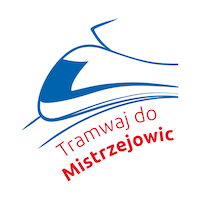The construction of a tram route, new roads, underground networks, pedestrian and bicycle routes in the middle of a city is a huge challenge. In order to efficiently manage traffic while the work is being carried out, temporary traffic organization is necessary.
What is a temporary traffic organization? Let’s explain.
The construction of a tram route, new roads, underground networks, pedestrian and bicycle routes in the middle of a city is a huge challenge. In order to efficiently manage traffic while the work is being carried out, temporary traffic organization is necessary.
When is a temporary traffic organization introduced?
Temporary traffic organization is introduced in connection with the need to carry out construction work that interferes with the road lane. When creating it, consideration is given, among other things, to the order in which the work is carried out, its compliance with the plans of the owners of underground networks (gas, water, heat or energy), the technology of work used and the safety of traffic participants.
Work on large urban infrastructure projects requires staging to ensure the proper sequence of reconstruction of individual infrastructure elements while maintaining possible traffic flow on streets and minimizing obstructions. It is worth noting that the various stages of changes are planned before construction begins, but are subject to ongoing adjustments issued by the City Traffic Engineer, even while they are in effect.
Who is the Municipal Traffic Engineer?
The temporary traffic organization is approved by the Municipal Traffic Engineer (MIR) after the design has been approved by the Police, the Cracow City Roads Authority and the Public Transport Authority. The Engineer analyzes the received documents not only for compliance with the current law, but also from the perspective of the needs of Kraków residents. This poses a challenge, as it requires balancing and planning the organization of traffic so that repairs and investments can be carried out while minimizing inconvenience to residents. In order to improve safety or streamline traffic, the City Traffic Engineer can make changes to the temporary traffic organization already in place on the ground.
How is this done?
Temporary traffic organization is always a kind of compromise that tries to find a balance between the different needs and expectations of traffic participants. Everyone travels in different ways – by car, on foot or by bicycle, others use public transportation.
Temporary traffic organization designers try to take these diverse needs into account to minimize disruption. However, due to limited resources – mainly space constraints – temporary traffic organizations will always cause inconvenience to all traffic participants when such large investments are made.
Temporary traffic organization plays a key role in ensuring safety during construction work. This is not only a matter for the Contractor’s employees, but also a concern for traffic participants – drivers, pedestrians and cyclists. Seemingly small changes, such as narrowings or speed limits, serve an important function. Even if there is no direct work at the site, these regulations are essential in minimizing the risk of accidents and maintaining safe distances between vehicles.
General principles of traffic organization during construction
- Residents will be informed 7 days in advance about changes in traffic organization. Information will be available, among other things, on our website, social media, on the radio, in the press and on information boards hung around the city.
- We plan to have a minimum of 10 major phases of temporary traffic organization, but each will be divided into sub-stages involving relatively minor modifications
- Almost throughout the entire construction period, traffic obstructions will occur in the area of the tunnel section, i.e. at the Polsadu Roundabout, on Młyńska and Lublańska Streets; on the remaining sections, restrictions will occur temporarily at various stages of construction.
- Individual designs of temporary traffic organization will be consulted and agreed each time with various institutions, including the police, the Municipal Traffic Engineer, the road manager or the organizer of public transport.


